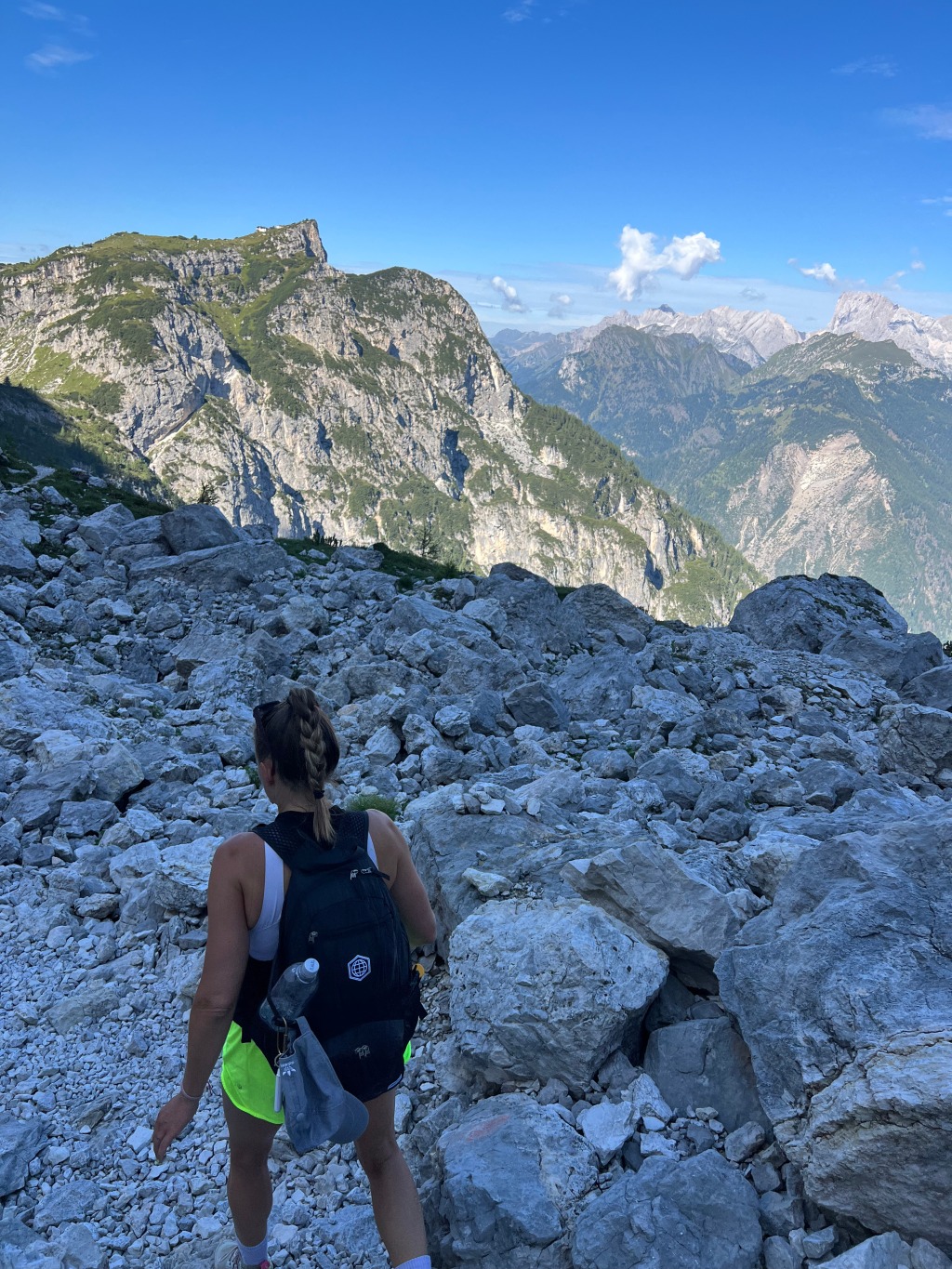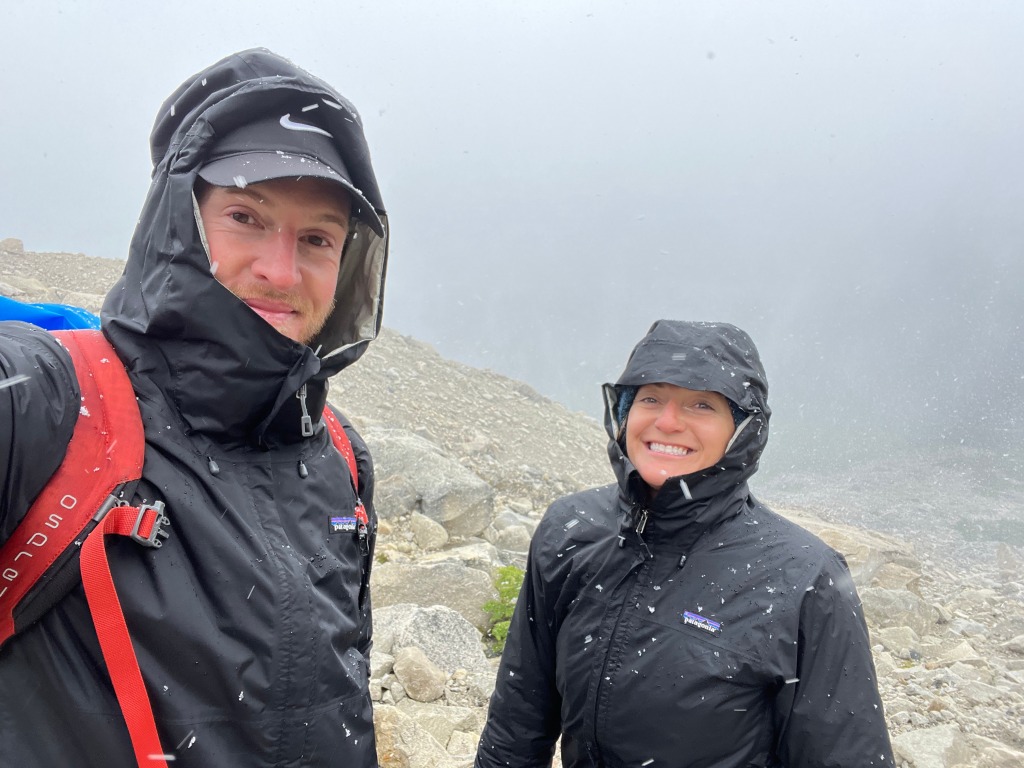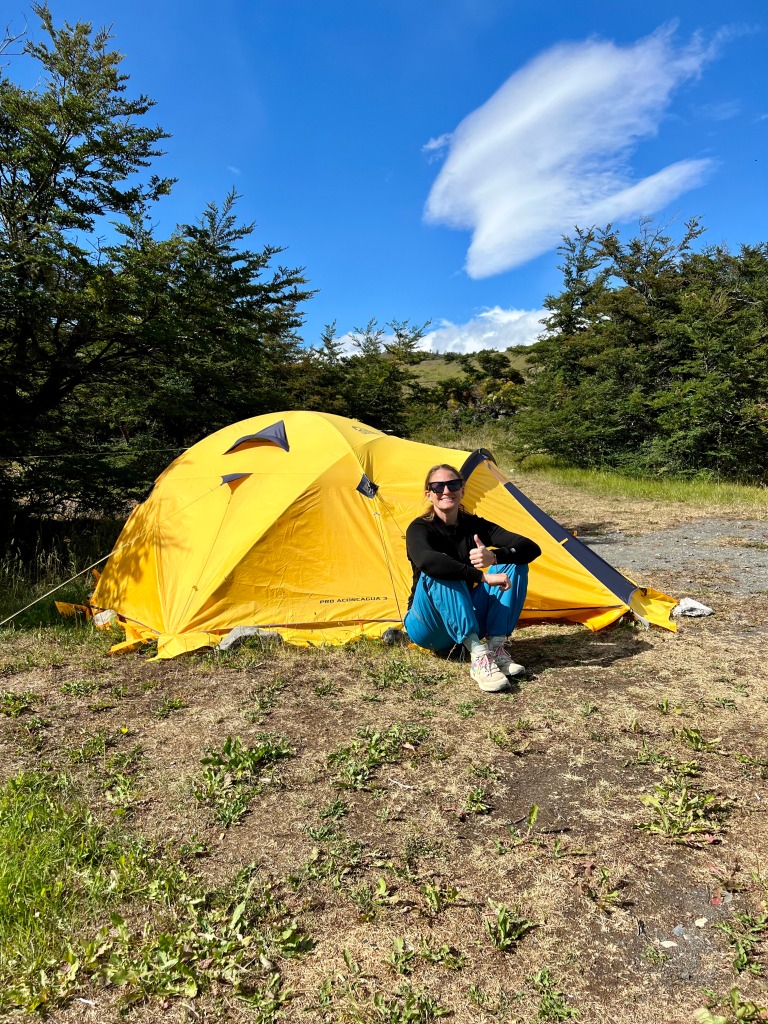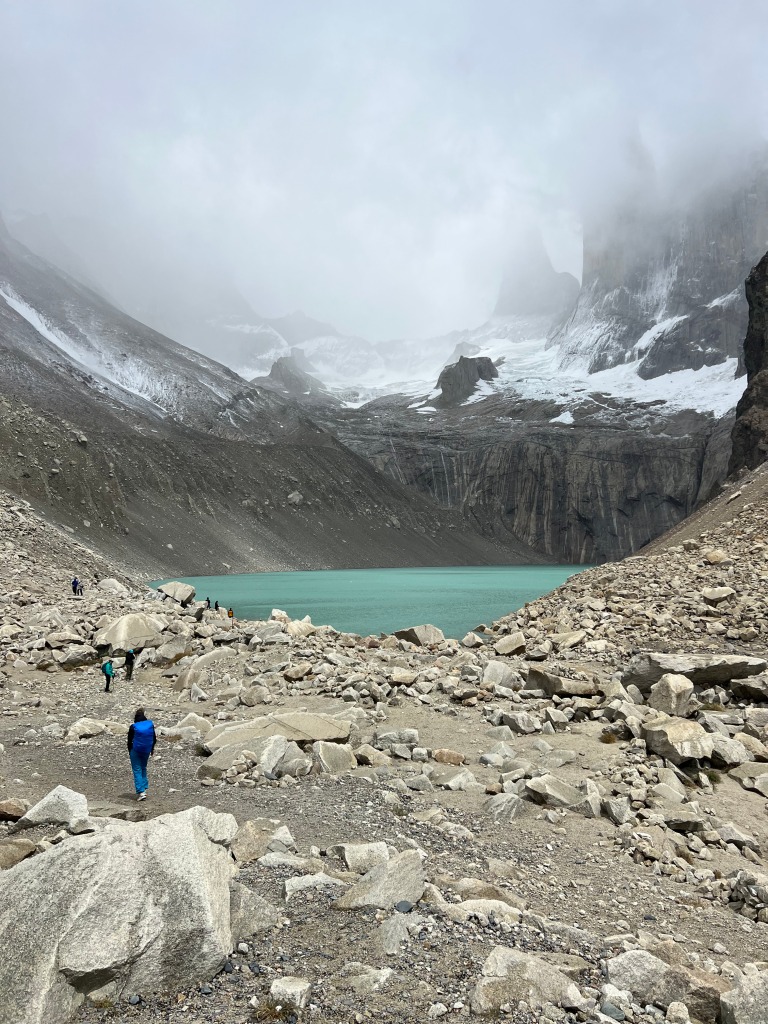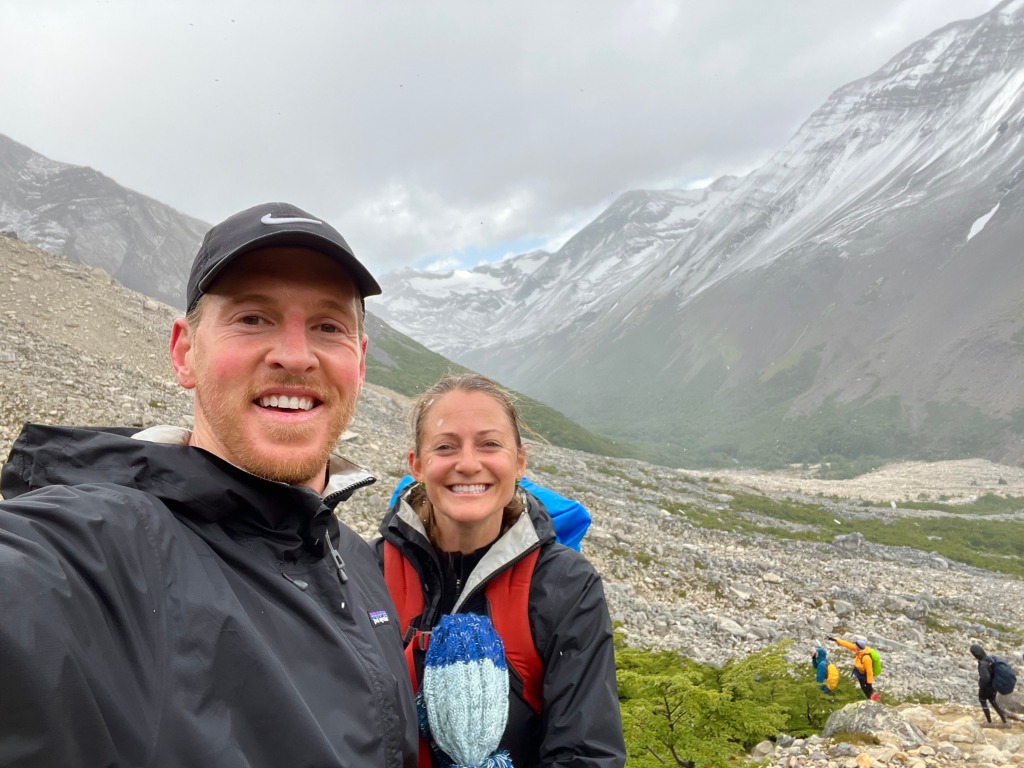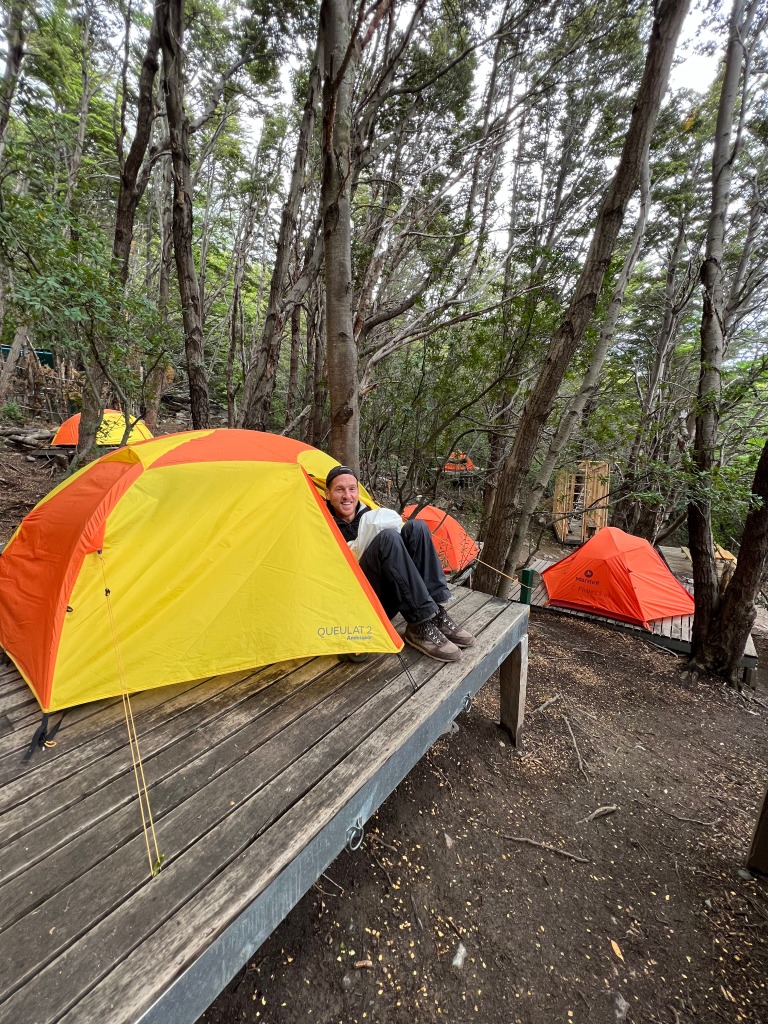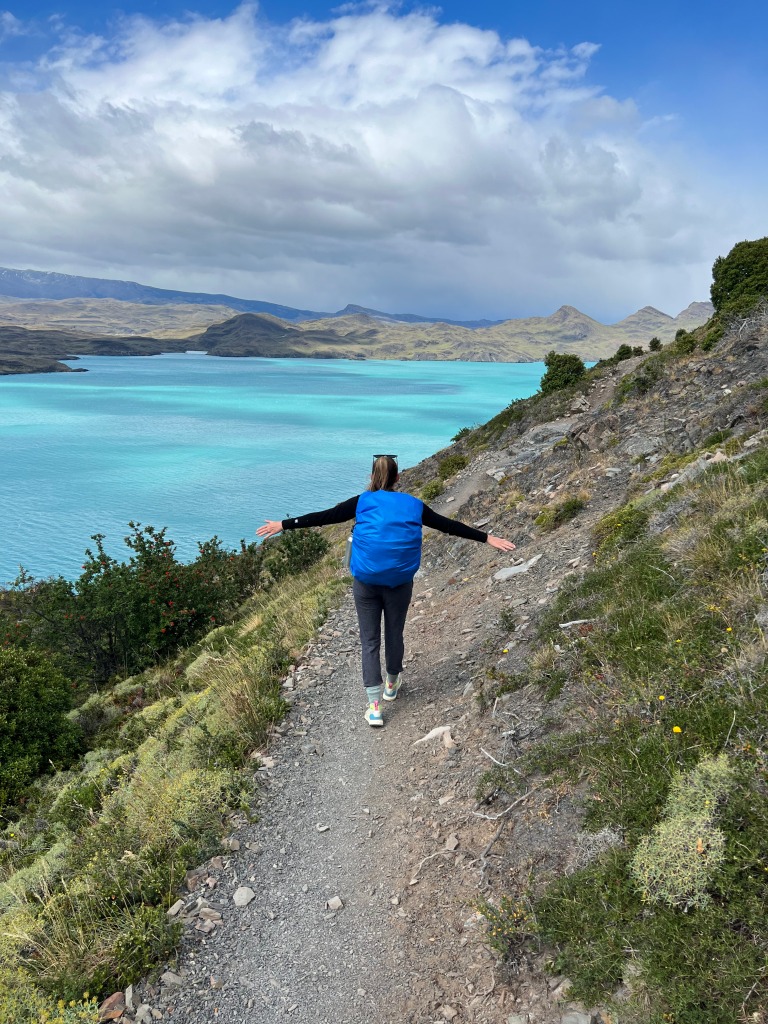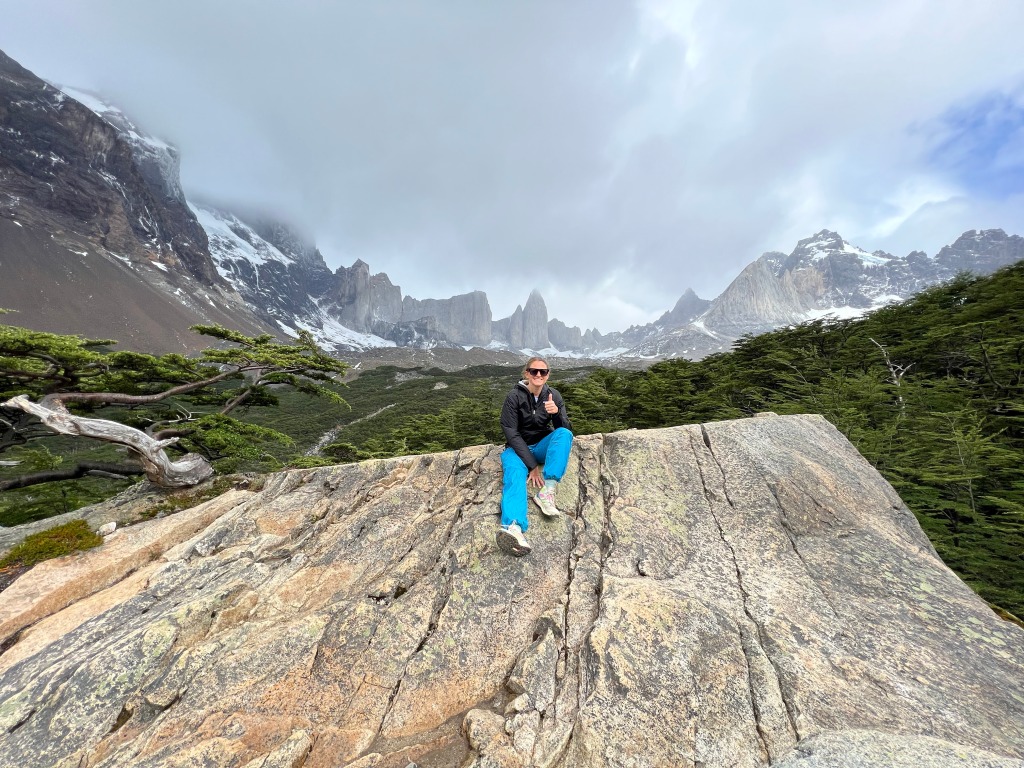Be prepared for all weather: If you’re on a hiking holiday, it is important to note that mountains have wild climates. Just like a tropical island, the weather in the mountains can change rapidly and without warning. Research weather conditions before trekking and always be prepared for anything – have layers for all situations. No matter how much research you do, you should still be prepared for pretty much anything!
In Patagonia, for example, we saw snow, hail, torrential rain, bright sunshine, and so much wind, all in one day. Luckily, we were prepared for all of it!
Have appropriate footwear and a way to keep feet dry: Theres nothing more uncomfortable when you’re hiking than having wet feet. Even if it’s not so bad on the day of your hike, its brutal to have to put your feet back into wet shoes or boots the next day. Be prepared with quick drying, water resistant, or waterproof boots. We also invested in water proof socks on our last trip, just in case.
Hiking Shoes: These are the hiking sneakers I wear and I am in love with them. I love everything about them. They are comfortable and have a great grip.
Consider investing in Merino wool items: I have no stake in Merino wool, but I should! I finally made some purchases for our trip to Patagonia and, I have to tell you, it was the best decision ever. I got Merino wool socks, a hat, and a really nice long sleeve undershirt. It was all so worth it! Merino wool helps to regulate your body temperature so you don’t get too hot or cold, and it also dries really quickly. 2 pairs of socks were perfect to rotate and the hat was excellent to have when I needed it. I even wear the long sleeve on my regular morning runs now.
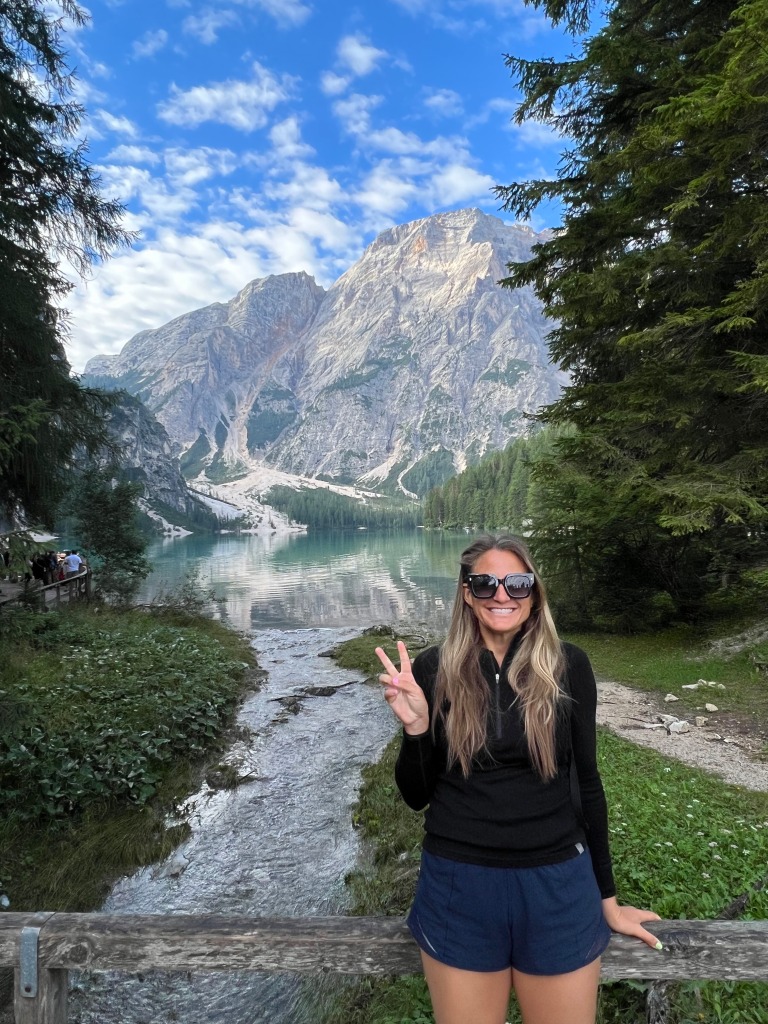
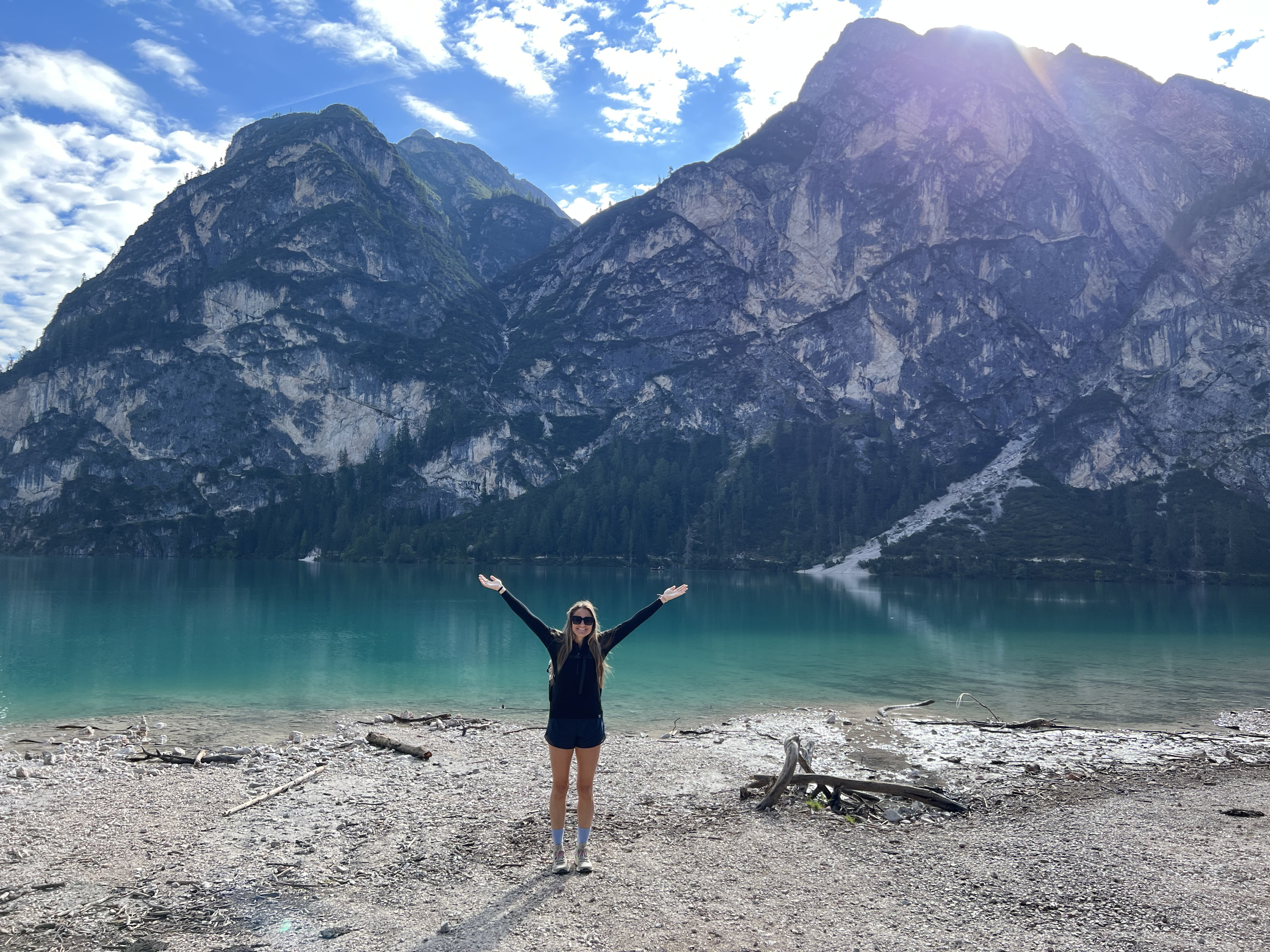
Quick dry waterproof everything: Again, I can’t stress enough how much you do not want to be wet! When looking for waterproof pants and jackets, make sure you look for the words waterproof not just water resistant. Many descriptions will be very clear about what type of protection they provide. Make sure you really read, there are some great hiking pants and jackets out there that repel water – that’s what you’re looking for. It also doesn’t have to come at a high price point, just be smart, do your research, and read reviews.
Solar charger: A solar battery charger can really come in handy as well on these types of trips. You don’t really have to do much with it, you can charge it up before the trip and then strap it onto the top of your bag while you’re walking around, or leave it sitting beside you when you’re relaxing in the sun. In case you’re not around any outlets for an extended period of time, this is a great way to assure you’ll have battery when needed.
Bag cover: Having a cover for your hiking pack, in my opinion, is essential. They are so reasonably priced, pack up nice & small, and so easy to strap on. They can save you from getting your things wet even if you’re not prepared to keep your body dry! They come in all different sizes and you can usually even buy them in packs. They are SUCH a worthy investment for day or overnight hiking.
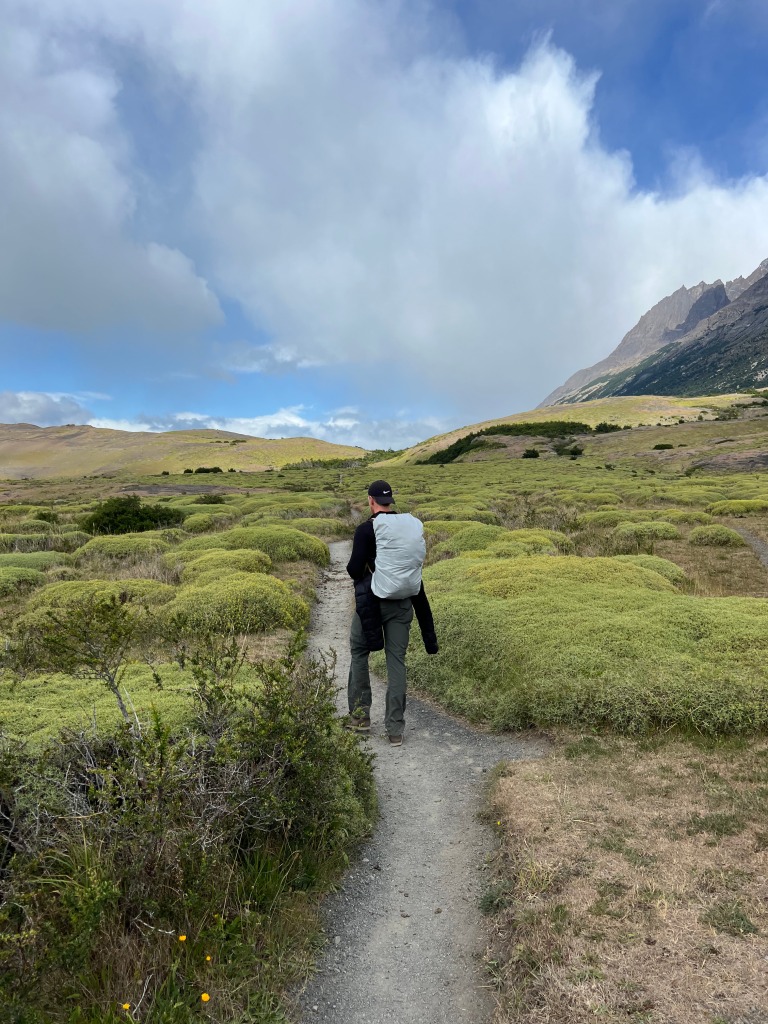
maps.me: This is one of the absolutely best apps we’ve found in our travels. It allows you to download maps of a place so that you can access them offline when you are there! Like magic, it finds your location and can provide directions while on remote trails. The excellent thing about this app is that they also have a TON of trails, dirt roads, etc… on the app. Other apps sometimes wont be able to find these routes and we’ve had a lot of success using maps.me while hiking and traveling in more off the beaten path places.
Be in decent shape: I am not saying you have to be an Olympian, but I am saying to know what you’re getting into and make sure you’re capable of doing it. Check the elevation loss and gain for your hiking days, get an estimate of how long it should take each day, find out how many miles or kilometers you’ll be traveling each day, etc… Make sure you are capable of doing what is expected, and if you’re not, put together a training program so that you can be ready. I would not advise entering into any type of hike just “hoping” that you can do it. Go in with confidence, and understand the place in which you are hiking.
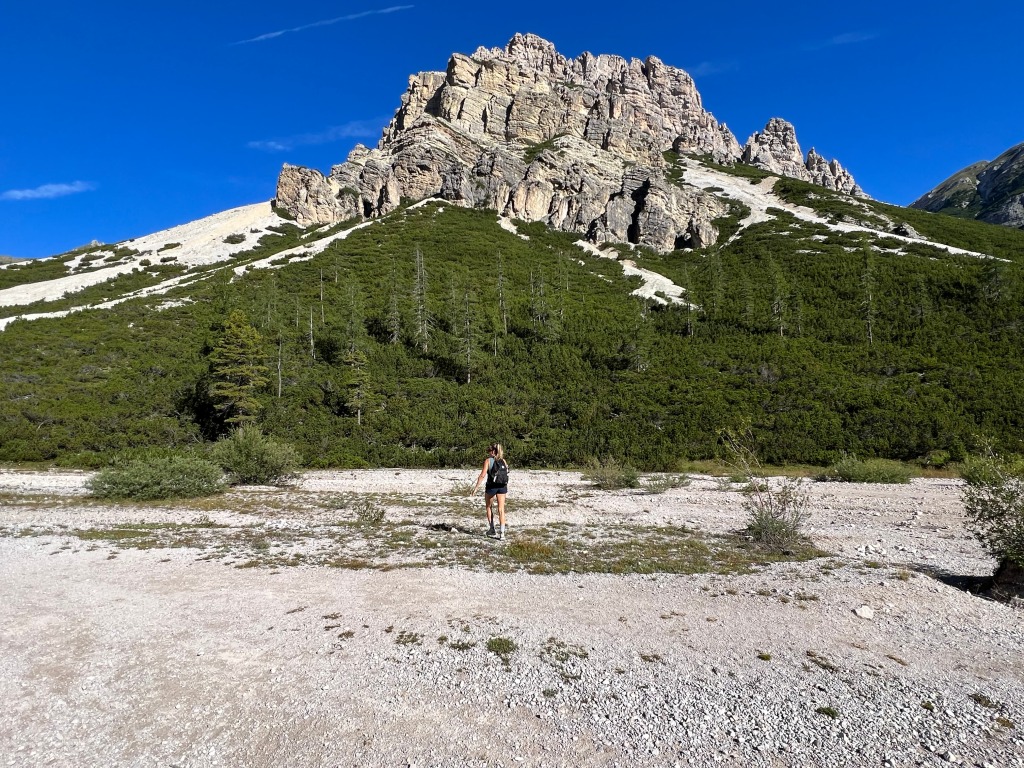
Travel insurance: Listen, I’m not going to act like I buy travel insurance for every trip because I honestly don’t, but when we’re doing hiking, a multi-day trek, or spending time in some real mountains, I do. I find it to be such a safe way to ensure that if you need help, you can get it. Anything can happen at any time, I don’t like to live in fear, but I like to be prepared. No matter how prepared you are in the mountains there are things you can’t account for, like a slippery rock, a snow storm, a twisted ankle, a fall, etc… I just think it’s better to be safe than sorry. I have found World Nomads to be a great place to buy insurance and have needed to use them before with successful results.
Don’t overpack: We’ve gotten SO much better at this over the years, but inevitably I still always bring at least one or two things I don’t need. When you’re carrying all of your belongings, this becomes even more vital. It really helps to write out each day and think through what you’ll truly need. My patagonia packing list was so close to perfection. You can check it out here.
Reliable water bottle and know where you can access water: Water is one of the most important things you need when hiking. It’s important to know where you can access water, if the water is drinkable, or if you need some sort of filter. We were able to get water all throughout the Tour du Mont Blanc and Patagonia with no problems. In the Dolomites, we had to buy bottled water most of the time. Traveling with a Life Straw, purification tablets, or other tools, to help you purify water can be super helpful in this case. Regardless of what you choose to do, just know in advance and be prepared.
Arrive at your destination with time before your hike: If you’re going do a trek that involves staying at multiple huts, campsites, rifugios, etc… that require you to maintain a schedule, then I HIGHLY suggested getting to your starting point a day or two before the hike begins. If something goes wrong, like a flight is delayed, and sets you back a day, you could end up with a HUGE hiking day ahead of you, or an entirely messed up schedule. We’ve found so many charming places to spend a day to two before all of our big hikes and it is well worth it for peace of mind and starting off fresh.
Links to Gear
All of the links below are to gear that I’ve actually used myself and found super useful. I may receive a small commission if you purchase through these links at NO cost to you!
Waterproof HIking Pants : these are the pants I got for our Patagonia trip. They were completely water proof and I wore them in torrential rain. They also really helped to protect from the extreme wind!
Solar Charger: this really comes in handy any time honestly! But especially when camping for days! We strap it on the back of our backpacks!
Merino Wool Socks: Full disclosure, these are not the ones I got. I got mine from bombas and I love them! But these look just the same and are so helpful to have when hiking!
Merino Wool Long Sleeve: This is the exact long sleeve I hike in and run in on cold mornings. I love it! I’ll probably invest in another one. It’s light but it does the job.
Merino Wool Hat: this hat was awesome for hiking. Very comfortable and quick drying!
Life Straw: water filter for water bottle
Day Pack: this is the day pack I got to hike in the Dolomites. It’s perfect for short treks, has so many compartments, and was really lightweight and easy to pack!
